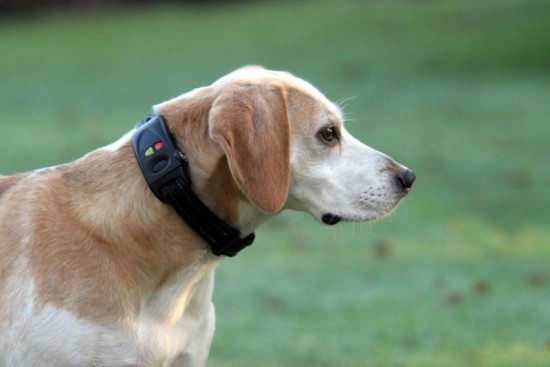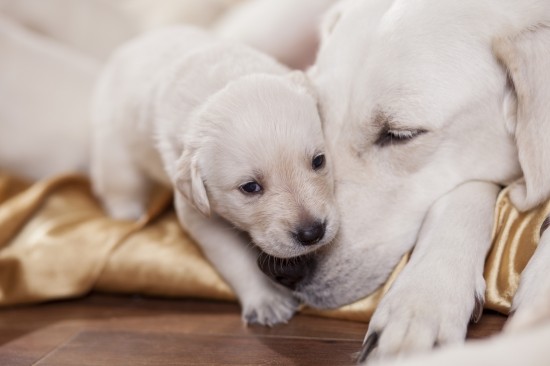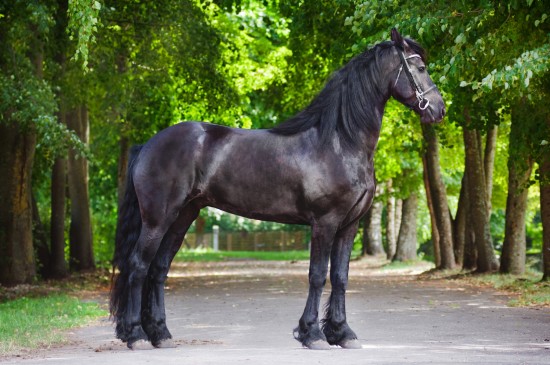
When working with a dog, many people use verbal commands, or perhaps a clicker device with dog training treats. They don't realize the effectiveness of hand signals during obedience training. Hand signals are an effective way for a dog to understand what the owner wants and can help reinforce other dog training methods.
Why use hand signals?
Hand signals help to get a dog's attention and to make sure he understands what the owner wants. Sometimes, what an owner says may be unclear, or their body language sends a different message than a verbal signal. This confusion will only create stress and weaken the relationship between the trainer and his canine companion.
Hand signals can help remove ambiguity that may come from verbal commands. At times, it is easier to get a dog's attention with hand signals as well. If a dog is excited, or far away from the owner, she may not hear her owner and shouting only upsets the animal. Using gestures will ensure that the dog knows what to do, even if they are not close enough to hear the owner's voice.
Who uses hand signals?
Non-verbal commands are a part of the most advanced training for dogs. People who place their animals in pet shows or competitions use hand commands. With all the animals and people as competitions, the noise can be distracting and confusing. With non-verbal commands, the dog focus is on the trainer, and there is no misunderstanding of what needs to be done.
Hunters often use hand commands because the dogs are farther away. Another reason for gestures while hunting would be to prevent scaring the game. The signals they use are basic but effective to keep pet and owner functioning as a team.
Guard dogs and assistance dogs are trained to understand hand gestures and other non-verbal commands so that they can protect people. Their dog training methods are more advanced than those learned by show and hunting dogs, but all hand commands start with three or four basic gestures.
Basic Hand Signals
?Stop: There are two different gestures used for this command. One way is to hold your hand out parallel to the ground, palm facing outward toward the dog. The other common signal is to curl your index finger and touch the tip of your thumb. Then, bring down the other three fingers parallel to your thumb and index finger.
?Stay: Stay is similar to the universal stop gesture but can be confused with the stop command unless you use the American Sign Language Stop gesture by touching your thumb and index finger then bringing the other fingers parallel.
?Come Here: This command starts with your arm out parallel to the ground, and then you bring your arm across your chest until you touch your opposite shoulder. If you are out in a field, another training method is to start with your arm at a 90-degree angle and then wave it over your head.
?Sit: This gesture can also be used if your dog is jumping. Put your arm out, palm facing downward, and then point your index finger toward the ground.
Teaching a dog these basic commands will help with obedience training, and can be useful if a puppy is too excited or getting into mischief.
Incorporating Hand Signals
Using a combination of hand and verbal signals is effective with obedience training to reinforce an owner's command. If puppies are excited, they may not hear your voice, but may see the signal and respond to it. If an owner will be using a clicker or other positive reinforcement method, he can make the appropriate hand gesture. Then, when the dog obeys the command, use the clicker as a marker to reinforce the behavior. If the owner uses training treats, this will encourage the puppy to learn the commands at a faster pace.
Using a combination of dog training methods and commands will help the dog learn basic manners quicker and easier. Non-verbal training methods have become popular with trainers because dogs use non-verbal communication methods in the wild. This helps the dog understand what an owner wants from them in a manner they are more comfortable with.
Dog Crate Sizes is a complete resource on selecting the right crate size for your dog, pet supplies and dog training to include dog training tips.
http://dogcratesizes.com/ Dog Crate Sizes is a complete resource on selecting the right crate size for your dog, pet supplies and dog training to include http://dogcratesizes.com/dog-training-tips dog training tips.
 Why you should get leather dog collar for your pet?
Why you should get leather dog collar for your pet?
Why you should get leather dog collar for your pet?
Why you should get leather dog collar for your pet?
 Bedbugs–Get Assistance to Get Rid of the Blood Sucking Pests
Bedbugs–Get Assistance to Get Rid of the Blood Sucking Pes
Bedbugs–Get Assistance to Get Rid of the Blood Sucking Pests
Bedbugs–Get Assistance to Get Rid of the Blood Sucking Pes
 High Tech Pets – Gadgets For Pets
High Tech Pets –
High Tech Pets – Gadgets For Pets
High Tech Pets –
 Problems That Can Arise From Weaning Puppies Too Early
Problems That Can
Problems That Can Arise From Weaning Puppies Too Early
Problems That Can
 Breeds Of Carriage Horse And Pony
Breeds Of Carriag
Breeds Of Carriage Horse And Pony
Breeds Of Carriag
Copyright © 2005-2016 Pet Information All Rights Reserved
Contact us: www162date@outlook.com